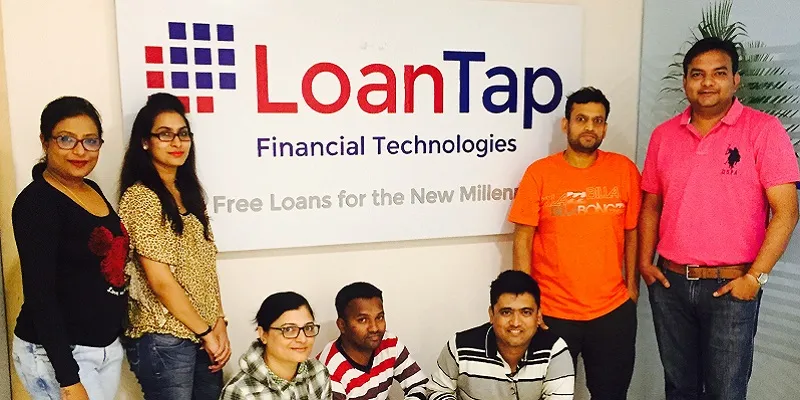How LoanTap revolutionised personal loans for salaried professionals, growing its order book by 10x
Lending has emerged as the poster boy of Indian fintech over the last 12-18 months. And LoanTap’s journey is not only a reflection of this, but also the promise of a more solvent middle class.
When LoanTap started its digital lending business in mid-2016, the conversation around fintech in India was hardly as loud as it is today. Of course, that changed with demonetisation later that year, but the narrative mostly remained focussed on payments and mobile wallets.
In the last 12-18 months, however, lending has emerged as the new investor favourite. It is not only the fastest-growing category in fintech right now, but it also accounted for nearly half of the equity deals in the sector last year. According to YourStory Research, lending startups raised a total of $1.21 billion in 2018, marking a 269 percent rise from 2016. The number of deals doubled as well.
LoanTap, too, raised funds (a mix of debt and equity) during this period - $6.25 million led by Shunwei Capital in 2018, and $8 million led by 3one4 Capital earlier in 2019, taking its overall capital infusion to about $21 million. Its other investors included Kae Capital, India Quotient, Tuscan Ventures, and Ashish Goenka, Chairman and Managing Director of Suashish Diamonds.
_(1)1559402724519.jpg?fm=png&auto=format)
Satyam Kumar, Co-Founder & CEO, LoanTap
LoanTap's growth since 2016
The Pune-based startup’s growth almost mirrors the rise of online lending in India. With only seven to eight percent of the country’s population having access to formal credit, LoanTap’s simple, easy-to-access, flexible loan products have managed to woo the young salaried class - its primary target audience.
Satyam Kumar, Co-founder and CEO of LoanTap, tells YourStory,
“Our customers typically have a minimum salary of Rs 5.5 lakh per annum, and can borrow up to Rs 10 lakh from the in-house NBFC platform. Our aim has been to use technology to deliver fast and flexible loans to a tech-savvy millennial population, and maintaining a profitable loan book at the same time.”
And delivered, it has. Here are some numbers.
1559477119187.png?fm=png&auto=format)
Until March 2017, LoanTap disbursed loans worth Rs 28 crore, having grown its order book by 6.7x since inception. Over the next eight quarters, until March 2019, it claims to have grown its loan book by 10X.
The startup has disbursed loans worth Rs 270 crore, with 1.8-1.9 million products being sold every quarter. The average ticket size has grown too -- from Rs 2.48 lakh in 2017 to Rs 2.8-3 lakh today. (It offers loans starting from Rs 20,000.)
LoanTap’s growth has primarily been driven by products such as EMI-free loans (which it pioneered in the industry), and personal overdraft (which saw increased adoption in 2018), followed by credit card takeover loans, rental deposit loans, advance salary loans, and more.
1559403696524.jpg?fm=png&auto=format)
Revolutionising personal loans for millennials
EMI-free loans have been dubbed “revolutionary” in the fintech sector and continue to be LoanTap’s trump card, accounting for 38 percent of its credit portfolio. These loans require the customer to pay only the monthly interest on the outstanding loan, and also have the liberty to schedule principal payments.
Satyam says,
“We have designed products that can provide financial assistance to customers at every stage of life, and match the speed and spending patterns of modern-day salaried professionals. That is why our EMI-free loans and salary overdraft are well-received in the market.”
It also helps that the startup’s disbursal mechanism is seamless, and applicants can get loans delivered in a span of 24-36 hours. Add to that, the overall sectoral shift with digital lending now accounts for 48 percent of all personal loans in India. This is estimated to reach 70 percent in 2023.
1559477160099.png?fm=png&auto=format)
Satyam, a banking veteran of over 17 years, explains,
“We started with conventional banking wisdom. But, the behavioural aspects of the consumer has changed dramatically in the last few years. Millennials will always choose a smooth product experience over traditional pricing modules. We tried to capture that through our platform. We have not created any differential growth story.”
Expanding the loan book and being profitable
LoanTap claims that unlike many of its peers, it has been profitable since the second year of business. “We have always followed a balance sheet approach. Despite experimenting with products, we have managed to keep the cash burn very low. We became cash-positive within the first six months and have been running a small and efficient team since then,” states the CEO.
He adds, “Our sanction-to-disbursal ratio is one of the highest in the market.”
The startup will continue to raise debt-and-equity rounds to create a larger loan book that can cater to more customers, especially in untapped markets. Satyam says, “Money is raw material for us. So, we keep going to the market.”
At present, LoanTap’s products reach India’s top 16 cities, with Bengaluru and Delhi-NCR being the largest markets. Mumbai, Pune, Hyderabad, and Chennai follow with an almost equal presence. By 2020, the startup plans to reach 26 cities, including Gwalior, Kota, and more.
“We do not want to go very deep geographically. The majority of our customers come from the services sector - aviation, telecom, IT/ITes, bank, and finance,” says Satyam, “They are our natural customers, and the average age of active borrowers is 28-34 years. It could come down now.”

Team at LoanTap
Future growth drivers and market landscape
LoanTap states that it will refine its product mix this year, and focus on niche, occasion-specific products like travel and lifestyle loans, wedding loans, consumer durable loans, bike loans, etc. These will consider a customer’s immediate financial requirement and give them payment flexibility. The startup expects to register a 4x growth in its loan book in 2019.
To grow these niche loan categories, it is working with partners, including event and travel platforms, wedding startups, and so on. “We have just started creating awareness about these products that will help us build a diverse portfolio,” Satyam explains.
LoanTap also wants to focus more on MSME lending, which offers a better yield than personal loans.
Of course, it is not the only instant loan provider in India. LoanTap competes with several well-funded startups like CapitalFloat, FlexiLoans, LendingKart, Rubique, EarlySalary, Faircent, and others, in an industry that represents a $1 trillion opportunity in the next five years, according to BCG.
But Satyam sounds a word of caution, saying,
“Convenience drove the initial growth in the digital lending sector. Because our legal system was so tardy and complicated, digital lenders could bring about quick resolutions and people loved that. But, trust is a big factor now and customers are becoming more savvy. They evaluate lenders from a trust point of view.”
Given that LoanTap’s fraud cases have come down from two (in 2017) to zero, trust shouldn’t be much of a problem!



1553672593710.jpeg?fm=png&auto=format&h=100&w=100&crop=entropy&fit=crop)






